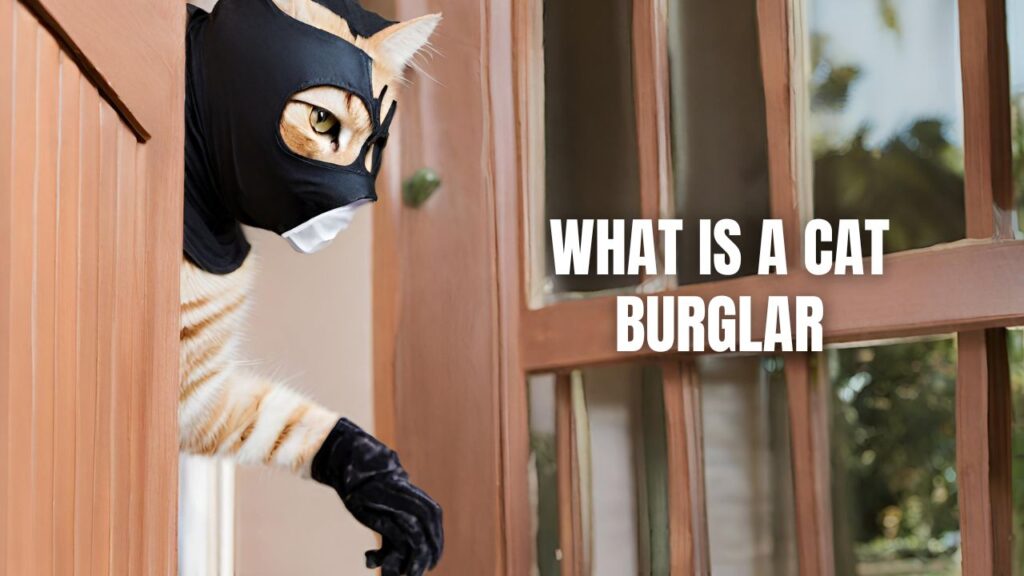Home security is a paramount concern for all of us. In this article, we’ll embark on a detailed exploration of a specific type of burglar – the elusive and cunning “Cat Burglar.” We’ll also provide safety measure to detect and deter them.
What Is A Cat Burglar?
A “cat burglar” refers to a thief who specializes in entering homes stealthily, often from upper story windows or rooftops, much like a cat. They target valuable possessions from homes when residents are away or asleep. Preventing access by these agile and quiet thieves requires several security measures.
How to Deter Cat Burglars?
Physical Barriers
The first line of defense is erecting physical barriers to make illegal entry as difficult as possible:
- Doors – Exterior doors should be solid wood or metal, install deadbolts, security chains, and high-quality locking mechanisms. Strengthen door frames as well.
- Windows – Close and lock all windows when not in use, especially upper story and basement windows. Install security film, grates, or bars on vulnerable windows while ensuring emergency egress is still possible according to fire codes.
- Fencing – Tall fences with locked gates around the perimeter can deter trespassers from even entering the property. Tighten gaps or holes in any existing fencing.
- Lighting – Motion sensor lights around the exterior can help illuminate any approaching burglars.
Monitoring Systems
Monitoring systems provide active surveillance and alerts:
- Security cameras – Multiple cameras monitoring vulnerable entry points, as well as aiming down from upper levels, provides video evidence and deters break-ins. Choose cameras with night vision and remote access via smartphone.
- Alarms – Install monitored burglar alarm systems on all external doors/windows to trigger calls to emergency response when breached. Audible alarms may also scare away intruders.
- Motion sensors – Battery powered internal motion sensors also set off alarms if movement is detected inside when the system is armed. These help protect valuables even if entry is achieved.
Increasing Natural Surveillance
Making illegal activity more visible to neighbors enhances natural surveillance:
- Landscaping – Trim vegetation around entry points so all doors/windows are clearly visible from the street. Eliminate hiding spots.
- Lighting – Bright perimeter and outdoor lighting eliminates dark areas burglars use to conceal themselves while loitering or attempting entry.
- Community Relations – Build positive relationships with neighbors to encourage natural surveillance of each other’s homes. Share contact info to report suspicious activity.
Hardening Targets
When burglars “case” neighborhoods to target, they look for weak or accessible points of entry. Harden the home target:
- Lock Everything – Lock all exterior doors/windows and interior entry points to restricted areas of house when away. Do not leave “hide-a-keys” accessible. Keep garage doors closed.
- Safes – Purchase fire/water proof safes with high security ratings to protect valuables. Secure to ground if possible.
- Inventory – Catalog and engrave identifiers on valuables in case stolen items are recovered later. Save photographic proof of possessions.
- Occupancy – Use timers on lighting when away to make home appear occupied. Stop mail/deliveries or ask neighbors to bring items inside during longer absences.
Protecting Yourself
If encountering an intruder, personal safety is paramount. Do not confront them:
- Phone – If safely able, call emergency services and activate burglar alarm immediately if installed. Provide details on location and description.
- Evacuate – Leave safely via exit point farthest from intruder, moving to sheltered location or neighbor’s house.
- Evidence – Do not touch anything initially as crime scene evidence may be destroyed. Provide responders access.
Ongoing Vigilance
Maintaining rigorous, routine security even during periods of low crime helps sustain defenses long-term:
- Routines – Lock all external doors/windows and arm alarm systems every night and when leaving house empty. Close curtains/blinds at night.
- Upgrades – Perform regular perimeter checks for any new security risks, lighting needs, or opportunities to invest in security upgrades as technology advances.
Staying Proactive
While no prevention guarantees perfect security, staying proactive significantly reduces vulnerability:
- Awareness – Keep informed on recent burglary methods in area and work with community groups on best practices. Consider security consultation.
- Defense in Layers – Implement overlapping physical barriers, surveillance methods, and vigilance techniques tailored to site-specific risks. Defense in depth is key.
Conclusion
By understanding cat burglary risks, hardening the home target, increasing natural surveillance, and remaining routinely vigilant, households can develop integrated burglar deterrence. Staying proactive and continuing to assess and upgrade systems as threats evolve allows residents to stay maximally protected. Security requires ongoing diligence but pays dividends in peace of mind.
Contact Callaway Security to maximize your home security!









